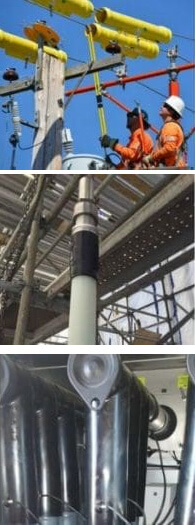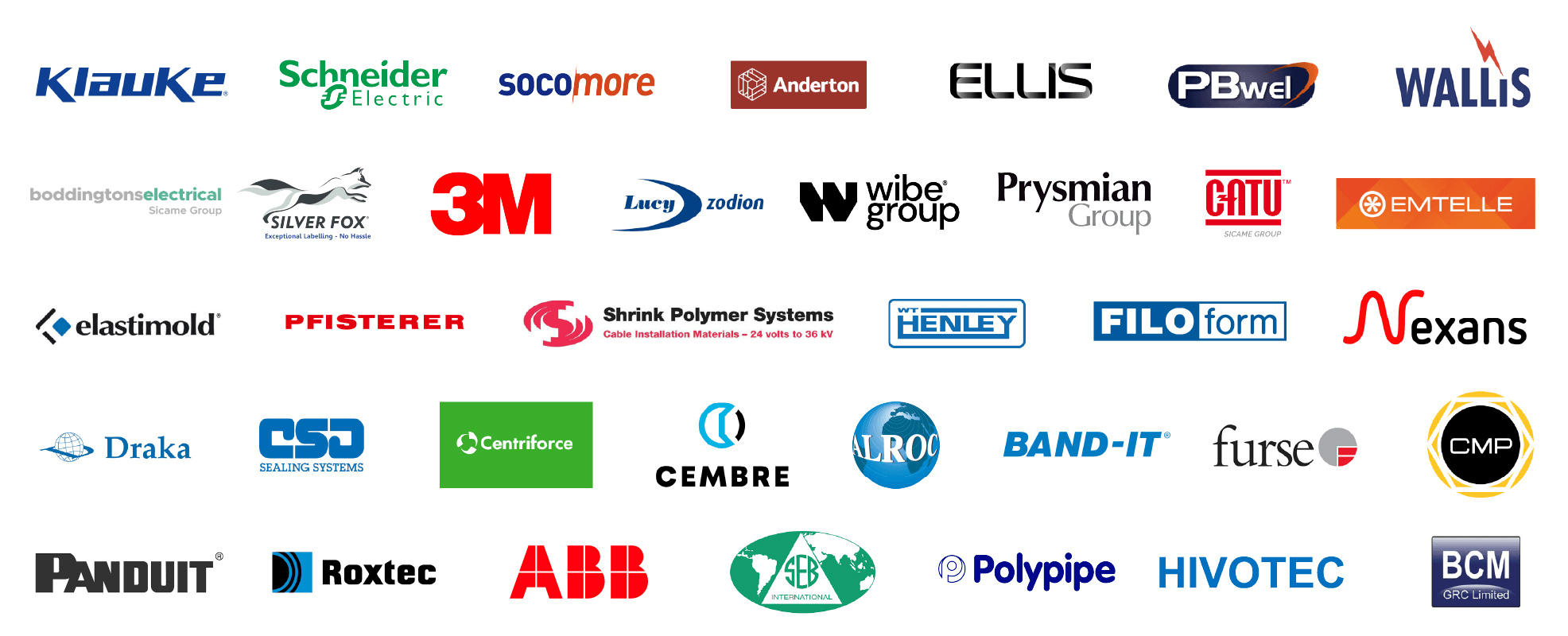Stokbord | Protection of HV Cables Up to 33kV In Underground Trenched Applications
Published 28 Nov 2025

Stokbord cable protection covers are rigid HDPE protection boards designed to be installed above buried cables in trenches. They are manufactured and designed by Centriforce to provide strong mechanical protection against impact, backfill pressure and accidental excavation strikes.
The cable covers are available in a range of distinctive colours and feature bold warning text to ensure that they are visible during maintenance and construction projects – optional colours and preferred text sizes are available when placing an order, with personalised text options also possible but dependent on minimum order quantities. Contact T&D for more information.
Not only are Stokbord Cable Covers highly visible and able to withstand large impacts, they are also waterproof and rot proof regardless of acidic or alkaline soil types. Cable covers are fully jointed, laid overlapped and held firm with plastic jointing pegs – a direct replacement for concrete cable covers and steel plate.
Centriforce together with distributor UK Thorne & Derrick Tapetile and Stokbord underground cable protection tiles and covers are the market leading, heavy duty utility protection system for protecting underground cable and pipes – this includes low voltage, medium voltage and high voltage power networks working at 11kV and 33kV.
stokbord cable protection covers
Stokbord covers provide a durable, lightweight protective barrier for buried cables and joint bays, reducing mechanical damage risks and simplifying long-term asset management. This guide walks installers and supervisors through a safe, repeatable workflow for installing Stokbord in a standard utility trench.
How to Install Stokbord Utility Protection in a Trench: A Step-by-Step Guide
Before you start: Materials, tools & checks
Pre-installation checks
- Confirm design drawings and cable routes, depths and separations
- Verify presence and condition of cable bedding and formation
- Check that the correct Stokbord product/spec is available for the voltage and mechanical requirements (Stokbord covers suitable for up to 33 kV where specified)
- Book any required utility isolation or testing with the site electrical team
Step-by-Step Installation
Step 1: Excavate and prepare the trench
- Excavate the trench to the specified depth and width. Keep side slopes stable and safe. Follow excavation safety rules and shoring requirements
- Create a uniform bedding layer to the depth specified (often sand or fine granular material). Remove large stones or debris that could damage cables or covers
- Compact bedding lightly where required, but maintain cable manufacturer’s bedding requirements
Step 2: Lay the cables
- Place cables on the prepared bedding, maintaining the required separation between circuits and other services
- Observe minimum bending radii and cable handling best practice. Use cable rollers or spreaders for long pulls
- Secure temporary supports or spacers where required to keep cables in the correct alignment before placing covers
Step 3: Place Stokbord covers
- Start at one end of the trench. Carefully place the first Stokbord panel so it fully covers the cables in that bay section
- Ensure covers are laid flat and centered over the cable run. Avoid trapping cables between covers maintain clearance and avoid point loads on cable sheaths
- Join adjacent covers using the supplied clips/fixings. Where protection covers need trimming, use the recommended cutting tool and deburr any sharp edges
- For joint bays or irregular sections, use pre-cut pieces or joint bay kits to achieve continuous coverage
Step 4: Secure and seal
- Fit any required edge seals, mechanical fixings, or locking clips per the Stokbord installation guide
- If specified, place geotextile separation layer over covers to prevent stone migration and protect the panel surface
- Lay warning tape (detector tape) at the specified distance above the covers to alert future excavators
Step 5 — Backfill and compact
- Backfill the trench in layers (lifts) with the approved material. Avoid using large clods or stones directly above the panel
- Compact each lift to the specification but avoid over-compaction directly on top of the covers/cables which could cause point loading
- Maintain records of backfill material and compaction trials as required by project QA
Step 6 — Final checks and handover
- Visually inspect the installed protection covers for gaps, poorly joined seams or damage
- Confirm as-built cable positions and panel extents on the site drawings / GPS records
- Provide the client with the installation checklist, any spare covers supplied and recommendations for future maintenance or marker locations
Quality & testing
Common checks:
- Make sure the covers are continuous and joints are fully engaged, small gaps can allow ingress of sharp objects during backfilling
- If covers are damaged during handling, replace the damaged section rather than attempting a field repair unless allowed by the manufacturer
- Ensure warning tape is clearly visible and at the correct depth to aid future excavators


THORNE & DERRICK are national distributors of LV, MV & HV Cable Installation, Jointing, Duct Sealing, Substation & Electrical Equipment – we service UK and global businesses involved in cable installations, cable jointing, substation earthing, overhead line and electrical construction at LV, 11kV, 33kV and EHV.
Since 1985, T&D have established an international reputation based on SERVICE | INTEGRITY | TRUST.
Contact us for 3M Electrical, ABB, Alroc, AN Wallis, CATU Electrical, Cembre, Centriforce, CMP, CSD, Elastimold, Ellis Patents, Emtelle, Euromold, Filoform , Furse, Lucy Electric & Zodion, Nexans, Pfisterer, Polypipe, Prysmian, Roxtec, Sicame, WT Henley.




